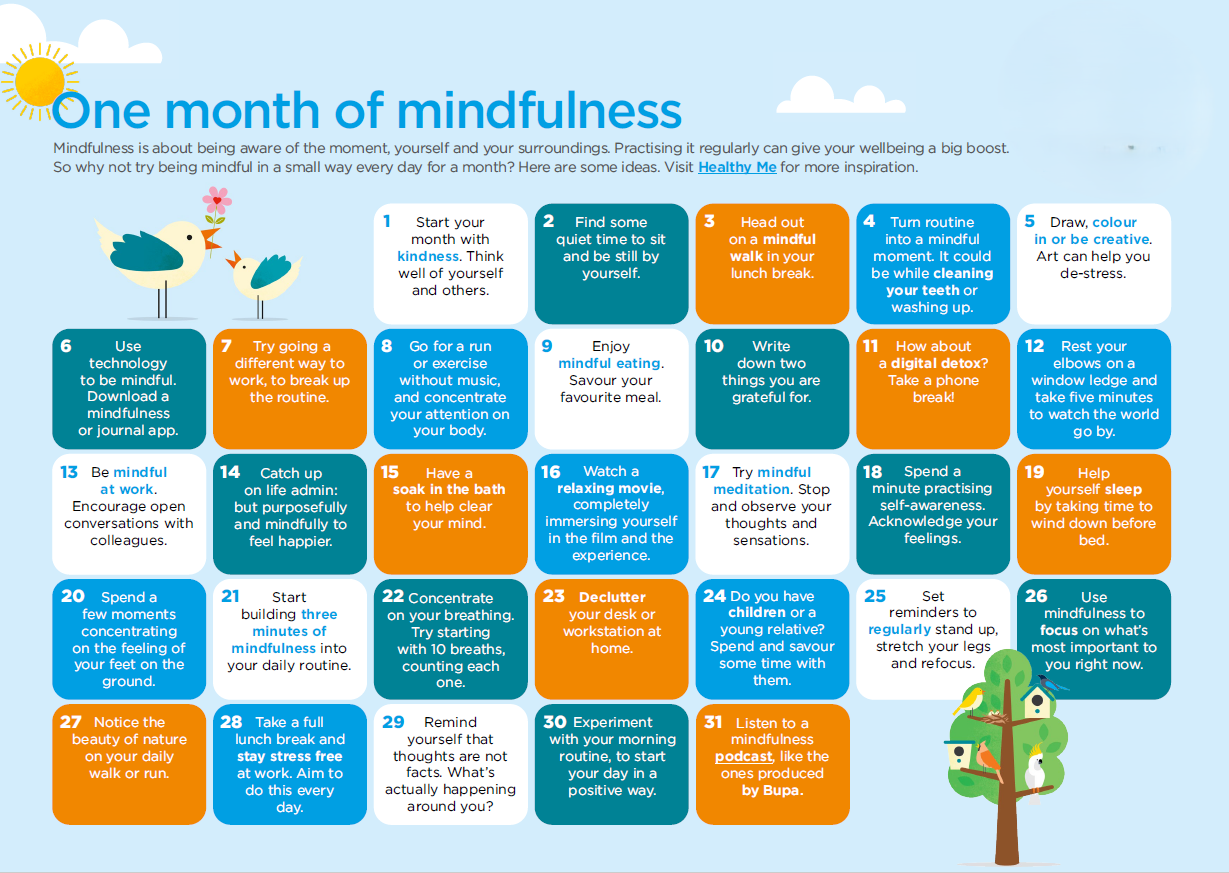How can busy professionals practice mindfulness without disrupting their schedule?
Mindfulness and Meditation for Busy Professionals is an emerging field that integrates ancient practices with modern workplace needs to enhance mental well-being, reduce stress, and boost productivity among professionals. Rooted in Eastern traditions, particularly Buddhism and Hinduism, mindfulness and meditation have evolved from spiritual practices to widely recognized techniques for managing the demands of contemporary work life. This shift gained momentum in the late 20th century, notably through the contributions of figures like Jon Kabat-Zinn, who adapted mindfulness practices for clinical settings, leading to programs like Mindfulness-Based Stress Reduction (MBSR) that promote mental health and resilience.The relevance of mindfulness for busy professionals is underscored by increasing levels of workplace stress and burnout. Many organizations now incorporate mindfulness and meditation into their employee wellness programs, recognizing their potential to improve individual and organizational performance.Studies have demonstrated that regular engagement in mindfulness practices can lead to significant benefits, including stress reduction, improved mental health, heightened emotional well-being, and enhanced productivity. These practices help individuals develop greater self-awareness, emotional regulation, and work-life balance, which are critical for navigating the challenges of modern work environments.Despite the positive impact of mindfulness and meditation, challenges remain for busy professionals attempting to integrate these practices into their lives. Time constraints, distractions, and high expectations can hinder consistent practice, while organizational cultures that prioritize productivity may not support mindfulness initiatives effectively.Addressing these barriers is essential for harnessing the full benefits of mindfulness, allowing professionals to foster a healthier, more balanced approach to work and life.As mindfulness continues to gain traction in corporate settings, its role in enhancing employee well-being and productivity becomes increasingly significant in today’s fast-paced world.
History
Mindfulness and meditation have roots that trace back thousands of years, with origins in ancient spiritual practices. These techniques were initially part of Eastern traditions, particularly Buddhism and Hinduism, where they were employed to promote spiritual development and inner peace. The practice of mindfulness, specifically, involves focusing one’s awareness on the present moment while accepting one’s thoughts and feelings without judgment, a concept that has been integral to various philosophical and religious teachings throughout history. In modern times, the integration of mindfulness into Western culture gained momentum during the late 20th century. Influential figures like Jon Kabat-Zinn played a pivotal role in this transition. He founded the Mindfulness-Based Stress Reduction (MBSR) program in 1979 at the University of Massachusetts Medical School, which adapted traditional mindfulness practices for a clinical context, aiming to reduce stress and enhance well-being among patients. This marked a significant shift as mindfulness moved from a purely spiritual practice to a scientifically recognized method for improving mental health. The increasing pace of life and the stresses associated with modern work environments have further fueled interest in mindfulness and meditation in contemporary society. As professionals grapple with burnout and anxiety, many organizations began to explore these ancient practices as tools for enhancing employee wellness and resilience. The adoption of mindfulness in corporate settings reflects a broader acknowledgment of its potential to foster not only individual well-being but also organizational agility and productivity. Thus, the historical journey of mindfulness and meditation is characterized by its evolution from ancient wisdom to a modern tool for coping with the challenges of today’s fast-paced world.

Benefits
Incorporating mindfulness and meditation into the routines of busy professionals offers a multitude of benefits that can significantly enhance their overall well-being and effectiveness at work.
Stress Reduction
One of the most significant advantages of mindfulness practices is their ability to reduce stress. Regular engagement in mindfulness techniques, such as meditation and deep-breathing exercises, enables individuals to manage stress more effectively by promoting relaxation and countering the physiological impacts of stress on the body.This reduction in stress not only improves mental health but also increases job satisfaction and productivity.
Improved Mental Health
Mindfulness and meditation have been shown to contribute to improved mental health outcomes. Studies indicate that these practices can lead to reductions in anxiety, depression, and overall psychological distress, allowing individuals to navigate challenging work environments with greater ease and resilience. Furthermore, mindfulness fosters increased self-awareness, enabling professionals to reflect on their thoughts and behaviors without judgment, which supports personal and professional growth.
Enhanced Emotional Well-being
Engaging in mindfulness practices has been associated with heightened emotional well-being. Participants in various studies reported an increase in positive emotions and overall life satisfaction. For instance, interventions like the Mindfulness-Based Relationship Enhancement (MBRE) have demonstrated benefits in Additionally, mindfulness practices have been linked to improved empathy and emotional regulation, fostering a more harmonious work environment.
Boosted Productivity
Mindfulness not only improves mental health but also enhances focus and cognitive functioning, which are essential for high productivity levels. By encouraging individuals to remain present and engaged, mindfulness helps reduce distractions and enhances clarity of thought, allowing busy professionals to work more efficiently and effectively.
Better Work-Life Balance
Incorporating mindfulness into daily routines can lead to a more balanced life. Professionals who practice mindfulness often report improved work-life balance, allowing them to manage both their professional responsibilities and personal lives more successfully. This balance is critical for long-term well-being and job satisfaction, preventing burnout and promoting overall health.

Techniques
Mindfulness Practices
Mindful Walking
Mindful walking is another accessible technique that involves focusing on the act of walking itself, paying close attention to each step and the sensation of the ground beneath. This practice can be done in various environments, allowing individuals to incorporate mindfulness into everyday activities seamlessly.
Breathing Techniques
Breathing techniques, such as deep or diaphragmatic breathing, can also serve as effective grounding methods. By focusing on the breath, individuals can center their thoughts and reduce anxiety, making it easier to manage stress throughout the day.
Grounding Techniques
Grounding techniques are effective practices designed to help individuals reconnect with the present moment, especially during times of stress or anxiety. They work by shifting focus from overwhelming thoughts to tangible experiences in the external environment. Common methods include engaging the senses through exercises such as the 5-4-3-2-1 method, which involves identifying five things you can see, four things you can touch, three things you can hear, two things you can smell, and one thing you can taste. This technique helps to alleviate feelings of anxiety by centering the mind on immediate surroundings.
Incorporating Grounding into Daily Routines
Morning Grounding
Starting the day with grounding exercises can set a positive tone and enhance overall productivity. Techniques such as body scan meditation or mindful breathing can clear the mind and reduce stress. Incorporating grounding practices into your morning routine allows you to approach daily tasks with a calm and focused mindset.
Grounding Breaks at Work
Throughout the workday, taking short grounding breaks is beneficial for maintaining focus and preventing burnout. Activities like mindful walking, deep breathing, or tactile experiences—such as holding a textured object—can be easily integrated into your schedule. Regularly practicing these techniques during breaks can help in managing stress levels effectively.
Evening Grounding
Ending the workday with grounding practices can facilitate a smoother transition into personal time. Techniques such as progressive muscle relaxation or guided meditation can assist in releasing work-related stress and improving overall well-being. Establishing a grounding routine in the evening can promote better sleep quality and mental clarity for the following day.
Guided Meditations
For those new to mindfulness practices, guided meditations can provide structured support. Various apps and online resources offer a range of sessions that cater to different needs and preferences, making it easier to practice mindfulness amidst a busy lifestyle. These guided sessions can help navigate distractions, allowing users to deepen their engagement with meditation and mindfulness techniques.

Challenges
Busy professionals often face numerous challenges when trying to incorporate mindfulness and meditation into their daily routines. The relentless pace of modern work environments, filled with deadlines and competing priorities, can make it difficult to prioritize mental well-being. Many individuals find themselves caught in a cycle of stress that can lead to burnout, anxiety, and diminished mental health.
Time Constraints
One of the most significant barriers is the perception of time. Professionals frequently believe they lack the time to engage in mindfulness practices, often dismissing even short sessions as impractical amidst their busy schedules . However, dedicating just a few minutes to mindfulness can yield significant benefits. It’s crucial to understand that even brief, consistent practices can lead to improved focus and reduced stress over time.
Overcoming Distractions
The challenge of distractions also plays a critical role in the struggle to practice mindfulness. In a world dominated by technology, notifications from emails and social media can disrupt one’s ability to remain present. Creating a conducive environment by setting boundaries around technology use—such as turning off notifications or finding a quiet space—can enhance the ability to engage in mindful practices.
The Risk of High Expectations
Furthermore, many individuals may enter mindfulness practices with high expectations for immediate results, leading to disappointment if these expectations are not met. Mindfulness is a skill that requires patience and consistency; results are often gradual and may vary from person to person. Recognizing that mindfulness is a journey rather than a destination can help mitigate feelings of frustration.
Cultural and Organizational Barriers
Lastly, cultural and organizational factors can also impede the adoption of mindfulness in professional settings. Work cultures that prioritize productivity over mental well-being may not provide the necessary support for mindfulness initiatives. Leaders play a crucial role in fostering a culture of mindfulness; when management exemplifies and encourages mindful practices, it can lead to greater acceptance and implementation within the organization. By addressing these challenges, busy professionals can create a more balanced work life and harness the full benefits of mindfulness and meditation, ultimately leading to enhanced focus, reduced stress, and improved overall well-being.
Resources
Wellness Programs and Consulting
Global Healthcare Resources adopts a holistic approach to employee wellness, encompassing various dimensions such as physical health, mental well-being, social connectedness, and work-life balance. They provide consulting services that include needs assessments, wellness program strategy development, communication plans, and ongoing evaluations. Organizations seeking to establish or enhance wellness initiatives can benefit from their insights, industry best practices, and evidence-based solutions to ensure program success.
Mindfulness Apps
The past five years have seen a significant rise in mindfulness and meditation apps aimed at busy professionals. Popular options like Headspace, Calm, and Healthy Minds Program offer features such as customizable meditation sessions, progress tracking, and reminders to facilitate a daily mindfulness practice. These apps typically include both guided and unguided meditations, allowing users to personalize their experience based on individual needs and preferences. Furthermore, the Healthy Minds Program distinguishes itself by maintaining transparency regarding data usage and providing a user-friendly interface without intrusive advertisements.
Daily Mindfulness Practices
Establishing a daily mindfulness routine can enhance overall well-being, especially for professionals with demanding schedules. Mindfulness apps are designed to help individuals create and maintain this practice, often featuring structured courses that cater to beginners. These resources enable users to integrate mindfulness seamlessly into their daily lives, ultimately promoting better mental health and productivity.
Specialized Resources for Kids and Teens
In addition to general mindfulness apps, programs like Yoga Ed. focus on providing mindfulness and yoga tools specifically for children and teens. These resources not only promote wellness in young individuals but also equip them with skills that can contribute to lifelong health and well-being.
Academic Research on Mindfulness
Various studies have been conducted to explore the efficacy of mindfulness-based interventions (MBIs) and commercial applications. Research has shown that apps like Calm and Headspace can positively impact mental health and enhance well-being, making them viable options for both personal and professional use. Such empirical evidence supports the integration of mindfulness practices in corporate environments, offering a cost-effective alternative to traditional training methods.

Case Studies
Mindfulness in Healthcare and Education
Recent meta-analyses have highlighted the potential benefits of mindfulness-based interventions (MBIs) for employees in high-stress professions such as healthcare and education. Virgili’s meta-analysis specifically examined healthcare professionals and teachers, finding evidence that MBIs can reduce occupational burnout, although the specific metrics for psychological distress were not fully detailed in the study. Future research in this domain is encouraged to include more homogeneous samples across various sectors to draw more generalized conclusions about the effectiveness of MBIs on employee mental health.
Corporate Implementations
In the corporate world, mindfulness has gained traction as a tool for enhancing employee well-being and productivity. Pioneers such as Jon Kabat-Zinn have facilitated this trend through structured programs like Mindfulness-Based Stress Reduction (MBSR) which have been adopted by numerous organizations. For instance, SAP has integrated mindfulness into its corporate culture, with over 6,000 employees participating in mindfulness courses that emphasize meditation and self-mastery. These programs have led to reported increases in well-being, creativity, and significant improvements in employee engagement and leadership trust. Similarly, companies like Aetna and General Mills have adopted mindfulness practices, recognizing their potential to not only enhance individual well-being but also to foster a culture of health and productivity within the organization. The results of these initiatives often include reductions in absenteeism and healthcare costs, showcasing the dual benefits of mindfulness programs on both employee health and organizational performance.
Transformational Strategies
The Boston Consulting Group (BCG) exemplifies how mindfulness can be used strategically to meet business challenges. BCG partners with various organizations to implement mindfulness practices aimed at transforming corporate culture and fostering agility in a rapidly changing business environment. Their collaborative model focuses on leveraging mindfulness to enhance decision-making and drive positive societal impact.
Thank You for Reading!
I truly appreciate you taking the time to read my article. Your support and engagement mean the world to me, and I hope you found valuable insights to apply in your own journey. If you have any thoughts, questions, or feedback, I’d love to hear from you! Feel free to share your thoughts or suggestions for future topics.
Thank you once again for being part of this community, and I look forward to connecting with you in the future.
Stay inspired and keep growing!
Warm regards,





